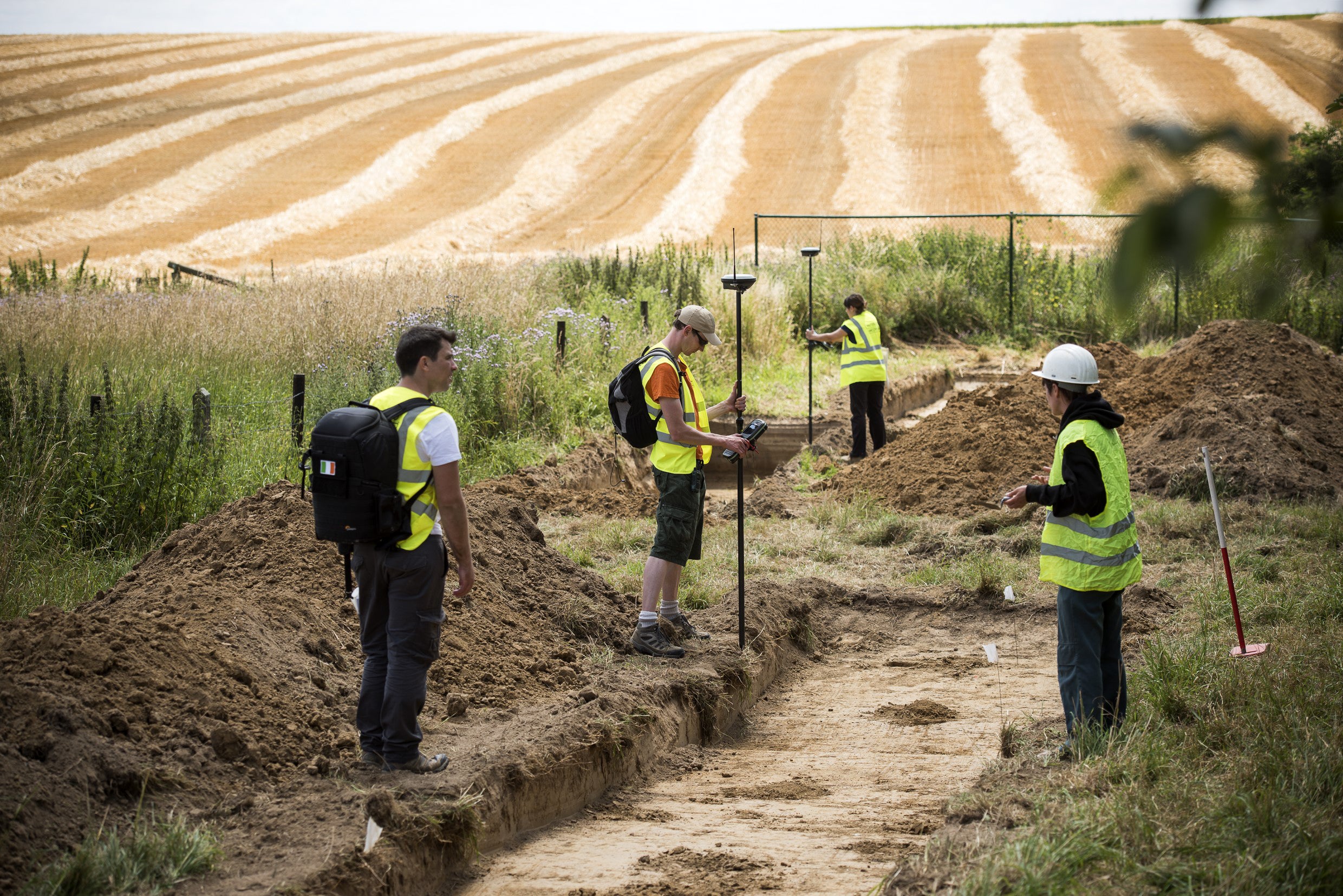Archaeologists discover ‘gore’ trench full of human and animal remains at famous battle site
In the north of the trench the team uncovered the remains of an ox and at least seven horses
Archaeologists have uncovered a ‘gore’ trench on the site of a field hospital on the Waterloo battlefield that was used to collect remains from the battlefield.
A previous excavation in 2022 found the remains of horses, amputated limbs and a lone soldier laid to rest together in what is now the farm’s orchard.
A week of excavation this month has now uncovered a purposefully dug pit which experts said was likely designed to quickly clear the hospital of gore after the battle.

It contains deposits of human and animal remains separated by a barrier of ammunition boxes stripped from soldiers’ leather satchels.
Veteran support charity Waterloo Uncovered is carrying out a targeted excavation at Mont-Saint-Jean farm in Belgium, which served as the Duke of Wellington’s field hospital during the battle in 1815.
Archaeological director Professor Tony Pollard, of the University of Glasgow, said: “I can’t think of any other site that has this combination of elements – it’s truly unique, within Napoleonic archaeology and beyond.
“The layout of the trench, with all animal remains on one side of the ammunition box barrier and all the human remains on the other, strongly suggests that the men who buried this individual attempted to offer him a level of dignity and respect despite the horrific scene they would have found themselves facing while clearing the field hospital of the dead.”

In the north of the trench the team uncovered the remains of an ox and at least seven horses, several of which show possible signs of being butchered, and three of which have been euthanised via a musket ball to the head.
To the south, archaeologists discovered a pile of amputated human limbs, many of which still contain evidence of removal by the surgeon’s saw, laid alongside the complete human skeleton excavated in 2022.
Waterloo Uncovered’s Excavation programme offers veterans the opportunity to take part in cutting-edge archaeology while receiving dedicated wellbeing support.
One of those taking part was Clive Jones, 66, of the Welsh Guards, who was stationed with the Household Cavalry in Knightsbridge during the Hyde Park Bombing of 1982 which killed 11 military personnel and seven cavalry horses.
The veteran said that uncovering the skeletons of seven horses had a big impact on him.
He said: “I thought the soldier would affect me the most, but it was actually the horses. It just brought me back to the horrors of that day.

“But everyone here is so supportive. Every beneficiary has a story that has brought them to Waterloo. Away from home and among a group of fellow veterans and wellbeing professionals, they can start to face those memories.
“Our veterans are exploring the aftermath of a battle while dealing with the ongoing aftermath of battles they have fought in – an aftermath which is often going on in their minds.”
John Dawson, 35, was shot in the head in July 2012 while serving with the Grenadier Guards in Helmand Province in Afghanistan, losing his right eye and the use of his left arm.

After undergoing significant surgery to reconstruct the right side of his head and fighting to regain the ability to walk, he has been slowly rebuilding his independence and confidence.
He said: “This is the first trip I’ve done without a support worker. Normally, I’d refuse to do things like this, but when my regiment contacted me about it, I decided to give it a try, and it’s exceeded all of my expectations.
“The amputated limbs we’re finding don’t bother me – I’ve seen much worse during my service.”
An international team of veterans, serving personnel and archaeologists is involved in the dig at the site of the battle, which saw the defeat of Napoleon.
Abigail Boyle, chief executive of Waterloo Uncovered, said: “It may seem counterintuitive to put injured veterans back on a battlefield, but it’s actually extremely beneficial.”
Bookmark popover
Removed from bookmarks